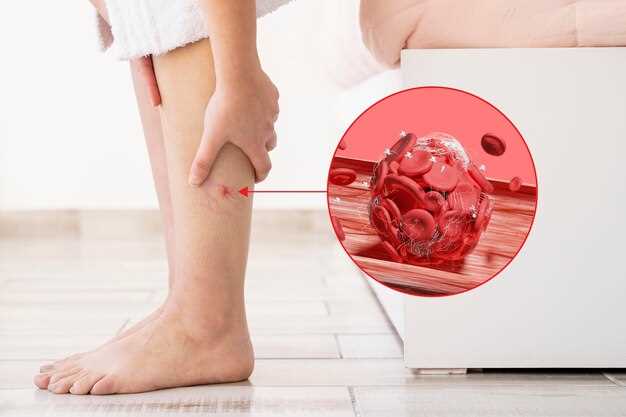
Are you struggling with edema? Losartan may be the solution you’ve been looking for. With its proven effectiveness in reducing swelling and improving blood circulation, Losartan can help alleviate edema symptoms and improve your quality of life. Don’t let edema hold you back – try Losartan today and feel the difference!
Understanding Losartan
Losartan belongs to a class of drugs known as angiotensin II receptor blockers (ARBs). It works by blocking the action of a substance in the body that causes blood vessels to tighten. By relaxing blood vessels, losartan helps lower blood pressure and improves blood flow.
How Losartan Works
Losartan works by inhibiting the binding of angiotensin II to its receptors, which leads to vasodilation and reduction in blood pressure. This mechanism of action makes losartan an effective treatment for hypertension and can also help to protect the kidneys in patients with diabetes.
Benefits of Losartan
Losartan has been shown to be effective in reducing blood pressure, improving cardiovascular health, and reducing the risk of stroke and heart attack. It is well-tolerated and has a good safety profile, making it a popular choice for patients with hypertension or heart failure.
Edema: Causes and Symptoms

Edema, also known as fluid retention or swelling, is a condition characterized by an excess of watery fluid accumulating in the body’s tissues. It can occur in various parts of the body, such as the hands, feet, ankles, and legs. Edema can be caused by several factors, including:
- High blood pressure
- Heart failure
- Kidney disease
- Liver disease
- Pregnancy
- Prolonged sitting or standing
The symptoms of edema may include swelling, puffiness, and a feeling of heaviness or tightness in the affected area. In some cases, the skin over the swollen area may appear stretched and shiny.
Edema: Causes and Symptoms
Edema, also known as swelling, is a condition characterized by the accumulation of fluid in body tissues. It can affect any part of the body and is often caused by fluid retention or inflammation.
There are several factors that can lead to edema, including:
Causes:
1. Poor circulation: Conditions that affect blood flow, such as heart failure or venous insufficiency, can lead to edema.
2. Inflammation: Conditions such as arthritis or infections can cause swelling in the affected areas.
3. Medications: Certain medications, such as corticosteroids or blood pressure medications, can contribute to fluid retention and edema.
Symptoms:
1. Swelling: Visible swelling in the affected area, such as the feet, ankles, or hands.
2. Puffiness: The skin may appear stretched and shiny due to fluid buildup.
3. Weight gain: Edema can lead to sudden weight gain as a result of fluid retention.
If you experience persistent or severe edema, it is important to consult with a healthcare provider for proper diagnosis and treatment. Losartan is one medication that may be prescribed to help manage edema and reduce fluid retention. Remember to follow your healthcare provider’s recommendations and dosage instructions for optimal results.
Managing Edema with Losartan
Losartan is a commonly prescribed medication for managing edema, a condition characterized by swelling caused by excess fluid trapped in your body’s tissues. By taking Losartan as directed by your healthcare provider, you can help reduce edema symptoms and improve your overall quality of life.
| Benefits of Losartan for Edema Management |
|---|
| Losartan helps to lower blood pressure, which can reduce the excess fluid buildup in your tissues that causes edema. |
| Losartan is effective in treating edema associated with conditions such as heart failure, liver disease, and kidney disorders. |
| Losartan can also help improve kidney function and reduce the risk of complications related to edema. |
How to Take Losartan for Edema Management
It is important to follow your healthcare provider’s instructions on how to take Losartan for edema management. Typically, Losartan is taken once a day, with or without food. It is essential to take the medication consistently at the same time each day to achieve the best results.
Possible Side Effects of Losartan

While Losartan is generally well-tolerated, some individuals may experience side effects such as dizziness, fatigue, or allergic reactions. If you experience any adverse effects while taking Losartan, be sure to contact your healthcare provider promptly.
Understanding Edema
Edema is the swelling caused by excess fluid trapped in your body’s tissues. It can affect any part of your body but is more common in the feet, ankles, legs, and hands. Edema can be caused by a variety of factors, including heart failure, kidney disease, liver disease, and certain medications.
How Losartan Helps
Losartan is an angiotensin II receptor blocker (ARB) that works by relaxing blood vessels, allowing blood to flow more easily. By reducing blood pressure and improving circulation, Losartan can help reduce edema and swelling in the body. It is often prescribed to manage edema caused by conditions such as heart failure or kidney disease.
Consultation and Dosage
Before starting Losartan treatment for edema, it is crucial to consult with your healthcare provider. They will assess your medical history, current medications, and overall health to determine if Losartan is the right choice for you.
Your healthcare provider will also prescribe the appropriate dosage of Losartan based on your individual needs. It is essential to follow their instructions carefully and take the medication as directed.
Regular follow-up appointments with your healthcare provider are necessary to monitor the effectiveness of Losartan in managing edema and to adjust the dosage if needed.
